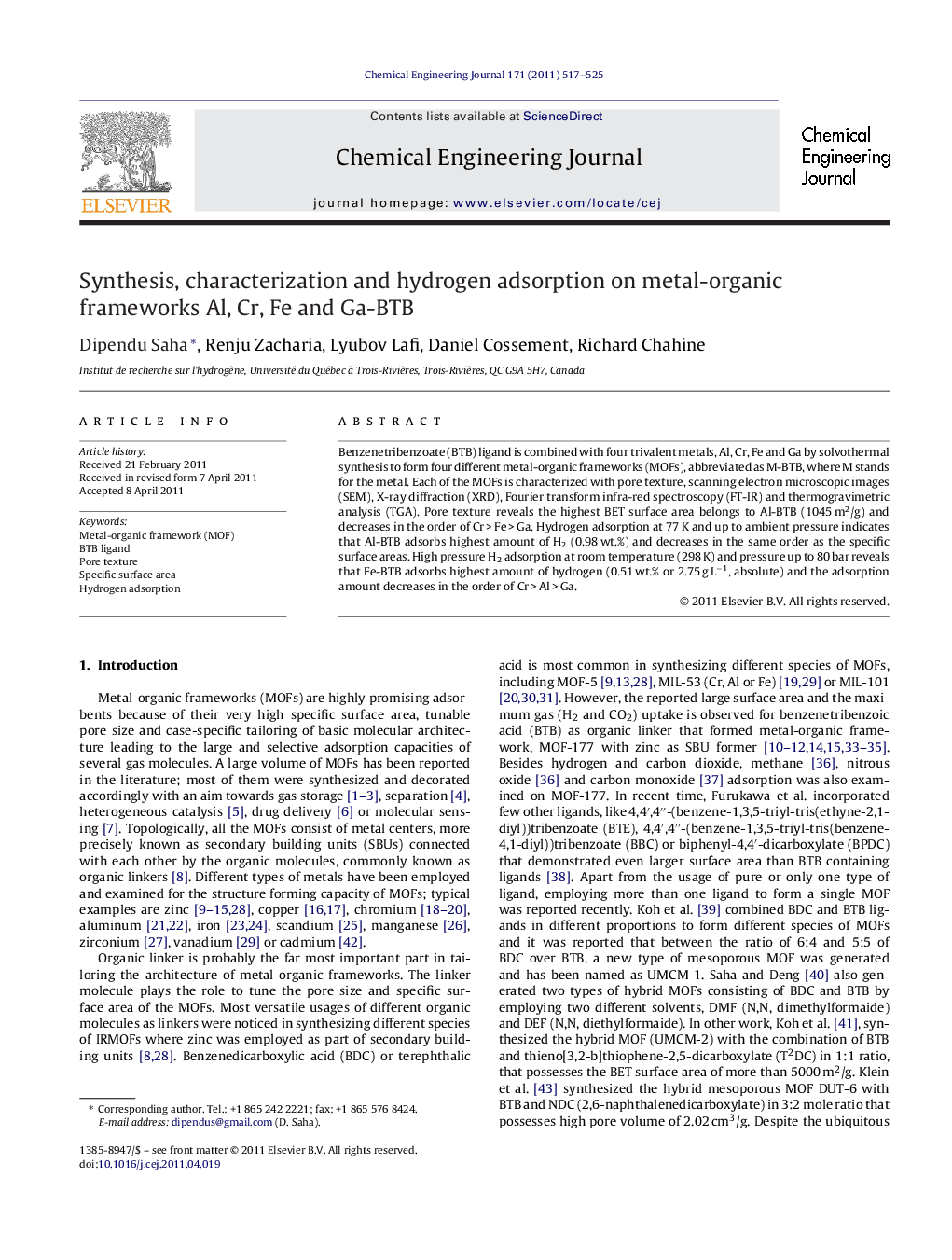| Article ID | Journal | Published Year | Pages | File Type |
|---|---|---|---|---|
| 150605 | Chemical Engineering Journal | 2011 | 9 Pages |
Benzenetribenzoate (BTB) ligand is combined with four trivalent metals, Al, Cr, Fe and Ga by solvothermal synthesis to form four different metal-organic frameworks (MOFs), abbreviated as M-BTB, where M stands for the metal. Each of the MOFs is characterized with pore texture, scanning electron microscopic images (SEM), X-ray diffraction (XRD), Fourier transform infra-red spectroscopy (FT-IR) and thermogravimetric analysis (TGA). Pore texture reveals the highest BET surface area belongs to Al-BTB (1045 m2/g) and decreases in the order of Cr > Fe > Ga. Hydrogen adsorption at 77 K and up to ambient pressure indicates that Al-BTB adsorbs highest amount of H2 (0.98 wt.%) and decreases in the same order as the specific surface areas. High pressure H2 adsorption at room temperature (298 K) and pressure up to 80 bar reveals that Fe-BTB adsorbs highest amount of hydrogen (0.51 wt.% or 2.75 g L−1, absolute) and the adsorption amount decreases in the order of Cr > Al > Ga.
Graphical abstractFigure optionsDownload full-size imageDownload as PowerPoint slideHighlights► We synthesized four metal-organic frameworks (MOFs) by the incorporating benzenetribenzoate ligand with four trivalent metals, Al, Cr, Fe and Ga. ► Specific surface area and pore volume of these MOFs decreases in the order of Al > Cr > Fe > Ga. ► H2 adsorption at 1 bar/77 K and 100 bar/RT changes in the order of Al > Cr > Fe > Ga and Fe > Cr > Al > Ga, respectively.
